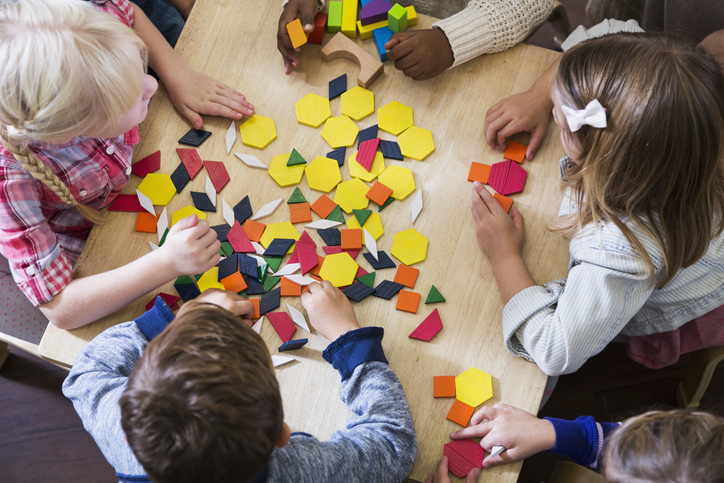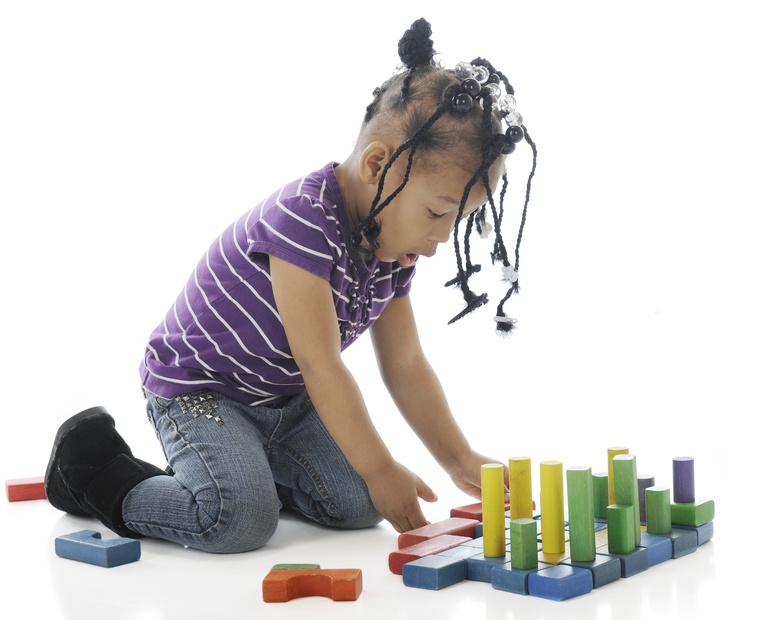This article introduces the vital perspective that spatial relations involve both ideas and language to express and understand them. Teachers who engage with dual language learners need to be sensitive to the need to help them understand both the spatial concepts and the associated language. Integrating spatial language and concepts is a challenge for all children, but poses distinctive challenges and opportunities for dual language learners.
When assessing what children know and can do to plan instruction (known as formative assessment), we strive to ensure that we are actually assessing what we think we are. Did we ask the question in a way that children will know what we are after? Do we not see skills and abilities because they aren’t there? Because they are only partially there? Because children understood the question differently from what we had meant? Or, because children did not answer in a way we expected or wanted?
With dual language learners, we worry about the issue of accurate assessment even more. So much of how we assess children is through language. And if children are still learning that language, we must be extra careful to not confuse language knowledge with knowledge of math. So, what can we do? And isn’t vocabulary important in its own right? After all, spatial vocabulary is a pretty good predictor of later mathematical skills. But it is important to remember that spatial vocabulary includes both formal and informal language (in any language!).
We can begin by acknowledging that knowledge in specific domains and of related vocabulary are both important in young children’s learning and development. The takeaway here is that we should support and assess both, understanding that children may fully understand concepts with or without knowledge of all the formal academic terminology. If a child says that triangles have three points, it is likely they have grasped the important idea that triangles have three angles.
 When assessing geometry and spatial relations with dual language learners, think of ways that you can express your knowledge without specific terminology or even without language. Gesture is an important aspect of spatial relations throughout our lives (think of your own gestures when someone stops you on the street for driving directions). You can use fingers to indicate how many, and to point to the same attribute on different shapes (for instance point to all of the angles in a variety of shapes). You can draw shapes, and move objects or one’s body to a specific location to express terms like on top of, next to, or inside. Allow children to use familiar words like slide (“The triangle has a slide on it.”) and build on that knowledge through support of domain-specific vocabulary (“Yes, that side of the triangle does look like a slide! Let’s look at the slide in the yard and see if it makes a triangle.”).
When assessing geometry and spatial relations with dual language learners, think of ways that you can express your knowledge without specific terminology or even without language. Gesture is an important aspect of spatial relations throughout our lives (think of your own gestures when someone stops you on the street for driving directions). You can use fingers to indicate how many, and to point to the same attribute on different shapes (for instance point to all of the angles in a variety of shapes). You can draw shapes, and move objects or one’s body to a specific location to express terms like on top of, next to, or inside. Allow children to use familiar words like slide (“The triangle has a slide on it.”) and build on that knowledge through support of domain-specific vocabulary (“Yes, that side of the triangle does look like a slide! Let’s look at the slide in the yard and see if it makes a triangle.”).
Children who are not dual language learners can benefit from these practices as well. Just as we can be challenged with new vocabulary such as cognitive, executive functioning or domain, young children, both dual language learners and English speakers, can be initially challenged by vocabulary such as edges, vertices, and faces. Don’t assume that they can’t identify the faces on a three-dimensional figure if they don’t know what to call them!



